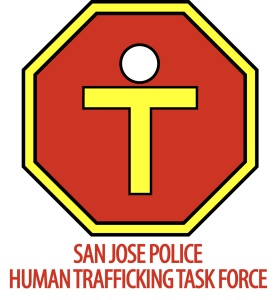 The biggest mistake an anti-trafficking organization can make is quoting – or promoting – incorrect statistics. And using incorrect, or unfounded, stats is all-to-common within the anti-trafficking community. Why does this occur and, more importantly, why does it matter?
The biggest mistake an anti-trafficking organization can make is quoting – or promoting – incorrect statistics. And using incorrect, or unfounded, stats is all-to-common within the anti-trafficking community. Why does this occur and, more importantly, why does it matter?
First, a disclaimer: I have used bad information myself in the past. In the early days of the San Jose Police Human Trafficking Task Force (which I managed from 2006-2011) few estimates existed and we used what was available. I have also fallen into the trap of repeating what others (many of whom I respected) were saying without verifying the quality of the data or source, or questioning the context in which the statistics were offered. But with time, I’ve become much more critical about the statistics or studies I quote. Even our use of language leads to misrepresenting information.
For example, have you heard someone say (or post online), “The average age of entry into forced prostitution is 12-14 years of age.” But what does the word “average” imply? Using age 13 as the mid-point of 12-14, “average” implies that for every victim who is forced into prostitution at age 16, there must be a victim who was forced into prostitution at age 10. For every victim age 17, there must be a victim nine years of age. When we stop and examine the implication of using the word “average,” we begin to see a potential problem with this quote. While no definitive studies exist to confirm the exact average age of entry into forced prostitution, based upon my conversations with many anti-trafficking professionals across the country, a more reliable statement would be that many victims are forced into the sex trade as young as 12-14 years of age. (Of course, there are always the exceptions of very young victims, but the point is we must be concerned with reliable information.)
A decade ago it was common to see this statement: “14,500-17,500 people are trafficked into the United States each year.” This stat – based on a vague analysis – was heavily used by United States government agencies. Though it was dropped from use several years ago it can still be found in use, often repeated by persons or organizations who have not taken the time to verify the source or think about its implication.
And why are we so dependent upon statistics to promote our anti-trafficking work, pass legislation, or raise funds? Agencies who support victims of domestic violence or sexual assault rarely offer big number statistics to justify their existence or their work. But, somehow, early in the evolution of the response to modern slavery statistics became part and parcel with justifying our response to slavery. This needs to change.
Why is this topic important? If you have not noticed, in the past few years the media has begun to question the validity of such statistics. Some have been bold enough to claim human trafficking is far less a problem than those of us within the anti-trafficking community believe. So we are being challenged to be more responsible with our claims.
At the organizational level, we risk losing credibility with our audiences, community, and financial supporters (or potential supporters) when we offer stats that have little to no merit behind them. Would you support an organization if you realized they were putting out incorrect information? If an organization can’t be relied upon to use current and correct information on a topic, would you trust them with our donor dollars? Simple things enhance – or detract – from our credibility!
This may seem like a minor issue, but it isn’t. We need to maintain the highest levels of integrity and credibility in our response to human trafficking. What we say in public, and post online, reflects upon the entire anti-trafficking community. (This is one reason why the use – and misuse – of statistics is closely examined in my book The Essential Abolitionist.)
For the record, the U.S. government now acknowledges the lack of solid data regarding trafficking; the Federal Strategic Action Plan on Services for Victims of Human Trafficking in the United States (2012), a joint effort of the Department of Justice, Department of Health and Human Services, and the Department of Homeland Security, includes no estimate of the number of victims within the United States! Instead, it openly recognizes the difficulty in measuring the magnitude of trafficking and calls for more definitive study. Take a close look at the statistics (and the sources) you use in your presentations or post online.
So, what data should we use? I’ll examine that topic in my next post. Meanwhile, what are your thoughts on this topic?
